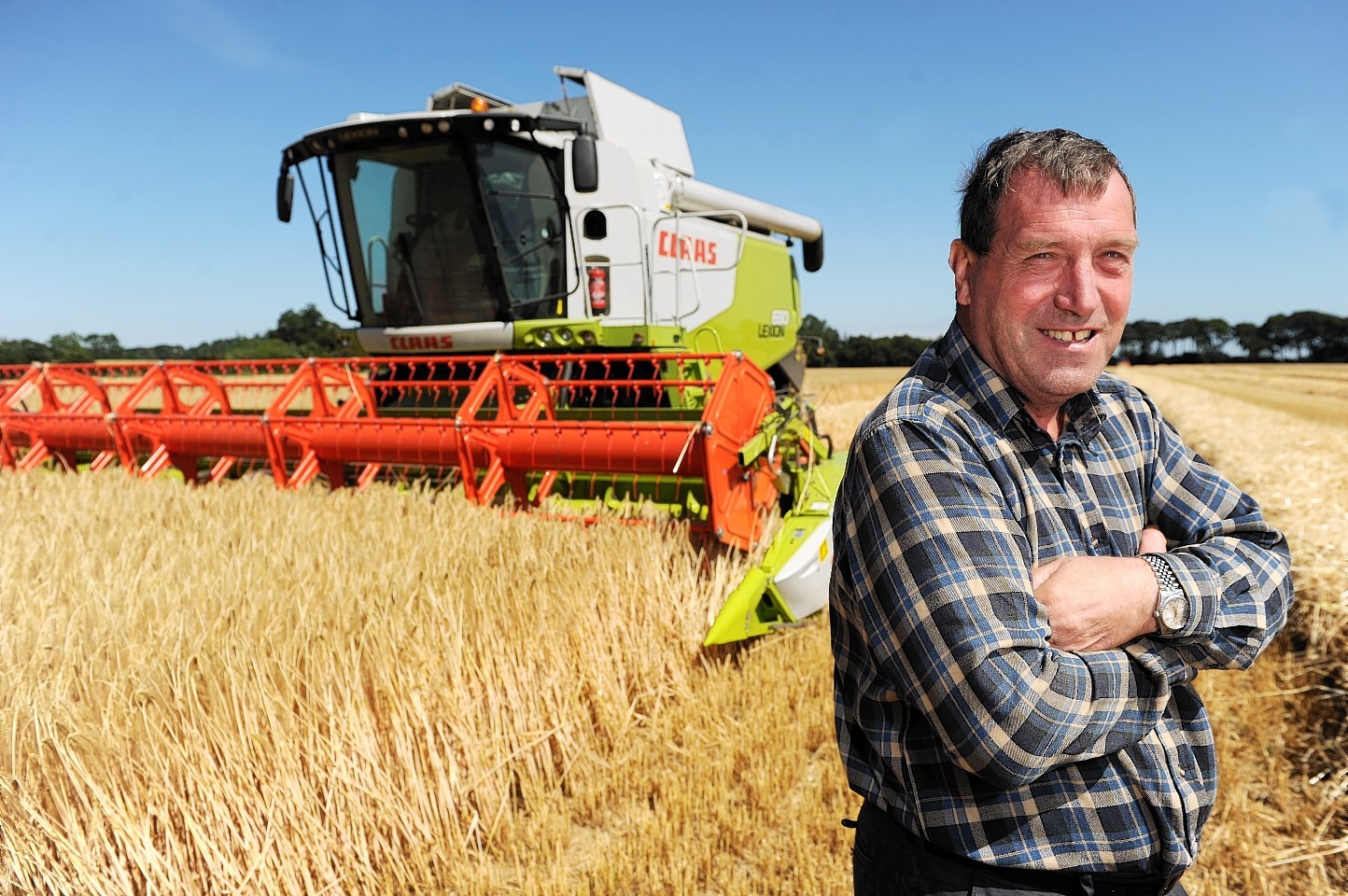Farmers in the north and some parts of Angus have started combining early winter barley crops.
Early indications suggest yields are holding up to expectations although some farmers have reported a thinner grain than expected.
Tain farmer Jim Whiteford, NFU Scotland’s Highland chairman, who farms at Shandwick Mains, Arabella, started cutting 40 acres of six-row Escada winter barley on Thursday.
“Yields look very good, going by the combine yield meter, at 3.9 tonnes an acre with a bushel weight of 65kg a hectolitre,” said Mr Whiteford.
He said the last time they grew winter barley, bushel weight was down at 58kg a hectolitre.
“We are three weeks away for oilseed rape so we don’t want any more thunderstorms now. There has been very lush, soft growth for the spring barley,” he added.
Moray farmer Iain Green, who runs a 3,000-acre mixed arable and livestock enterprise at Corskie with his parents Jimmy and Nan, started cutting winter barley on July 10.
“It’s an ok yield but thinner grain than last year,” said Mr Green who has cut around 110 acres yielding to 3.4tonnes an acre with a bushel weights ranging from 60kg to 63kg a hectolitre.
He has been cutting various varieties including Retriever – a six-row hybrid – which he said had performed poorer than expected.
Spring barley is set to be cut in the next three to four weeks, said Mr Green who expressed concern over the recent and forecast thunderstorms which had already flattened some patches of spring barley.
Laurencekirk farmer Andrew Moir, who chairs NFU Scotland’s combinable crops committee, said some patches of barley and wheat in the area had been flattened by the weather.
Andrew Stephen – managing director at grain merchant W. N. Lindsay – said he had seen two samples of “big, bold barley” from Morayshire, both of which had good specific weight but yields were slightly lower at just over 3 tonnes an acre.
Highland Grain chief executive Simon Barry said he had seen a mixed bag of samples from growers in the region.
“I think people are happy with yields with crops taking 3 – 3.5 tonnes an acre, but there has been a mixed bushel weight. We have had some as low as 57kg a hectolitre and some as high as 67kg,” said Mr Barry.
HGCA market analyst Jack Watts said: “The price outlook is depressed with the lowest prices in four years as crop prospects look very good across the northern hemisphere, Europe and in the UK.
“So there is very little concern over grain supplies, especially feed grains which has been the supporting factor of price in previous years.”
